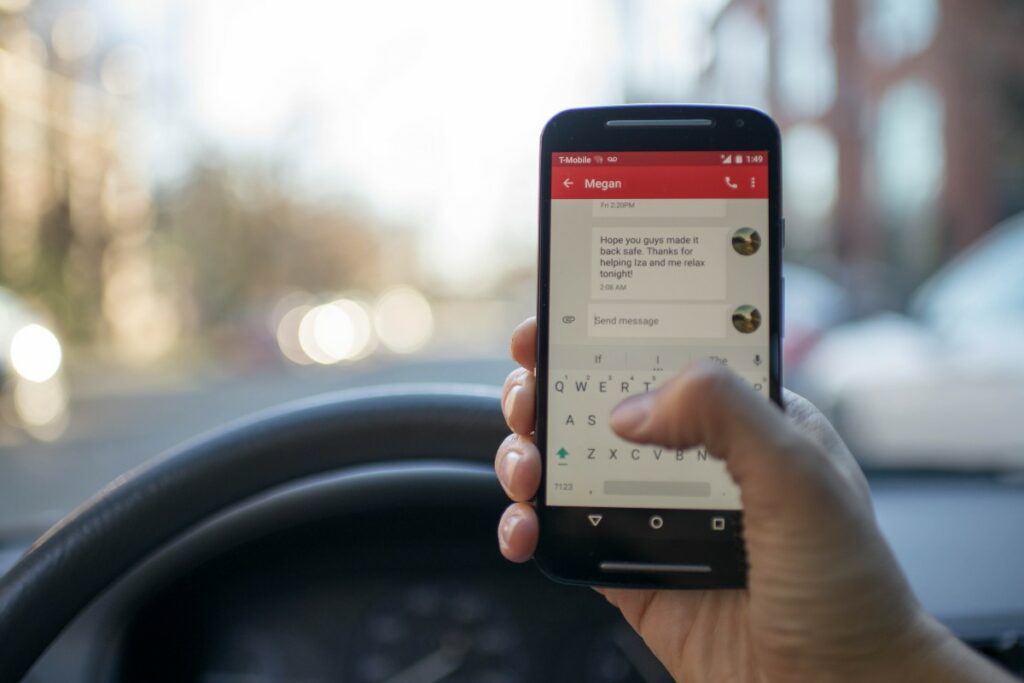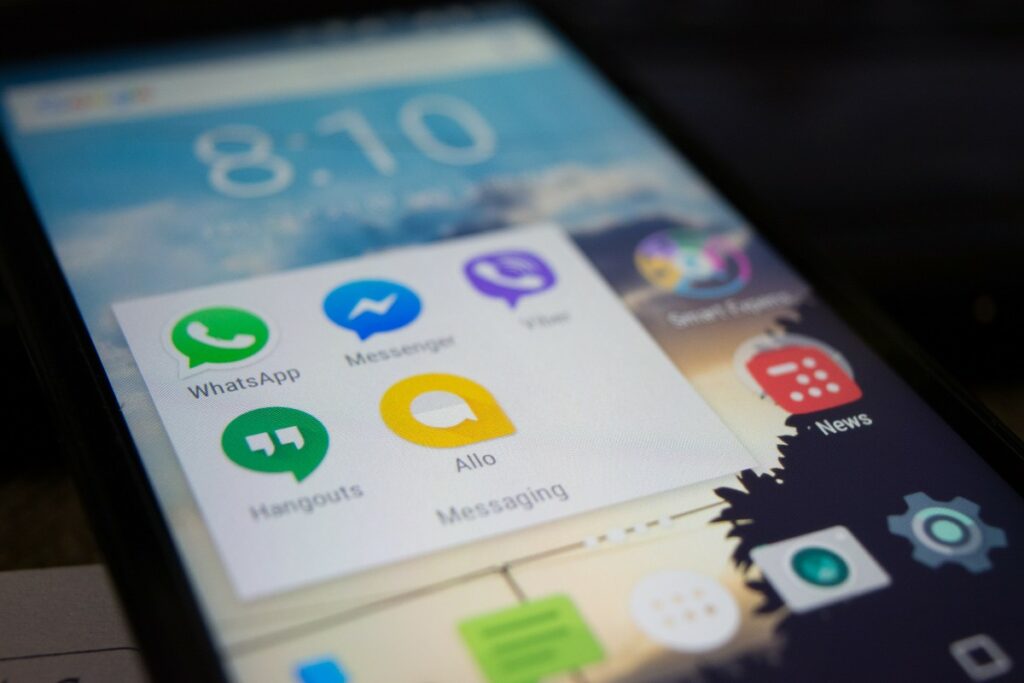You’re not limited to the basic SMS services provided by your carrier; there’s a plethora of texting alternatives at your fingertips.
These alternatives provide not just the ability to send a quick message but also come packed with additional features like media sharing, group chats, and even video calls.
If you’re looking to save on your phone bill or seeking features that surpass your standard text messaging service, exploring different texting apps can be a game-changer.
Whether you’re an iPhone devotee or an Android enthusiast, the right app can enhance your texting experience significantly.
The best part? Many of these alternatives are free, user-friendly, and secure, making them great options for staying connected with friends, family, and colleagues without any extra cost.
In the search for the perfect texting alternative, you might find yourself navigating through a vast sea of options.
From comprehensive communication tools like Viber and Whatsapp to niche services tailored for business communications like Birdeye and Listrak, there’s something out there to suit everyone’s needs.
The key is to identify what’s most important for your communication style—are you looking for simplicity, advanced features, or perhaps a combination of both?
Understanding Texting Alternatives

As you navigate the world of communication, it’s essential to know about the advancements in texting technologies beyond traditional SMS.
The Shift from SMS
Texting has evolved significantly since the advent of SMS (Short Message Service).
With the rise of smartphones, several apps offer rich communication services beyond the 160-character limit of SMS.
Popular alternatives include WhatsApp, Facebook Messenger, Telegram, and Signal.
These services allow you not only to send text but also to share multimedia, use end-to-end encryption, and even perform voice and video calls.
- WhatsApp: Offers end-to-end encryption and group chat features.
- Facebook Messenger: Integrated with Facebook for social networking.
- Telegram: Known for its high-level security and customizable features.
- Signal: Prioritizes privacy with its encryption protocols.
Public Awareness and Adoption
Adoption of these texting alternatives is driven by increased public awareness of their benefits.
Key factors influencing adoption include the desire for more expressive communication, concerns over privacy, and the cost-effectiveness of using internet-based messaging over SMS, which can incur fees.
- Expressive Communication: Emojis, GIFs, and stickers are now common.
- Privacy Concerns: Encrypted messaging services are gaining traction.
- Cost-effectiveness: Internet messaging avoids SMS fees, especially internationally.
Note: User preferences and needs will guide your choice among these alternatives.
Whether you seek more expressive ways to communicate, prioritize your privacy, or want to save on costs, there’s an app that fits your criteria.
Popular Messaging Apps and Platforms

In your search for alternative ways to communicate, you’ll find a variety of apps and platforms that suit different preferences, whether you’re inclined towards simple text messages or robust email services.
App-Based Services
The landscape of messaging apps is diverse, with WhatsApp leading the charge as a highly popular choice due to its simplicity and no-cost model.
It supports not only text messaging but also sharing locations, photos, documents, and more.
Another great open-source option is QKSMS, which allows you to personalize your messaging experience.
For those who favor organizing their messages, Microsoft SMS Organizer is a notable pick.
And if customizing themes is your thing, then Textra SMS offers that flexibility.
Lastly, Handcent Next SMS stands out by providing the option to send messages without needing your phone at hand.
Social Media Platforms
Social media isn’t just for scrolling through newsfeeds; platforms like Facebook Messenger and Instagram DMs have become standard tools for real-time messaging.
These apps offer an array of features, including group chats, video calls, and various interactive elements like GIFs and stickers, enhancing the overall communication experience.
Email and Instant Messaging
Beyond traditional messaging apps, there’s also the reliability of email services such as Gmail and Outlook, which now offer integrated instant messaging features, allowing for quicker back-and-forth conversations.
Alongside email, dedicated instant messaging platforms like Slack and Microsoft Teams are tailored for a more professional environment with their advanced collaboration tools and file-sharing capabilities.
Innovations in Communication Technology

Texting alternatives have expanded dramatically with advances in technology, providing you with more choices to stay connected.
From enhanced text messaging formats to voice-activated systems, these innovations are tailored to enrich your communication experience.
Rich Communication Services (RCS)
RCS is the next generation of SMS, offering you features similar to those you find on modern messaging apps directly in your texting service.
With RCS, you can:
- Send high-resolution photos and videos.
- Receive read receipts.
- Engage in group chats.
- Share your location with friends and family.
Voice-Activated Messaging
Voice-activated messaging harnesses the power of speech recognition to make sending messages more convenient for you.
Here’s how it can enhance your daily life:
- Dictate messages hands-free while driving or multitasking.
- Use voice commands to send messages through devices like smartphones and smart speakers.
- Experience greater accessibility if you face challenges typing on a keyboard.
Factors Influencing Texting Choice
When choosing a texting app or service, you consider various factors that impact your satisfaction and use.
Each aspect plays a critical role in your overall experience.
Security and Privacy
Your texts carry personal and sensitive information.
Security features like end-to-end encryption ensure only you and the recipient can read messages.
Privacy settings give you control over who can reach you and see your online status.
User Interface and Experience
The ease with which you can navigate an app’s user interface (UI) profoundly affects your texting behavior.
An intuitive design with clean aesthetics and minimal loading times enhances your overall experience.
Features such as customizable themes and emojis add a personal touch, while quick response options speed up your conversations.
Accessibility and Inclusivity
Texting should be inclusive, catering to all users regardless of physical ability.
Look for apps that offer voice-to-text features, large fonts, and assistive technologies for visual or hearing impairments.
An inclusive app ensures that you and everyone in your circle can communicate effectively.
Impact on Society and Culture
Texting alternatives have notably altered the dynamics of how you communicate and engage with media.
These changes have significant implications for language and literacy as well as business and marketing.
Language and Literacy
Texting and its alternatives have transformed your use of language, giving rise to new abbreviations, slang, and emojis that foster quick and informal communication.
This has had mixed effects on literacy:
- Abbreviations: Shortened forms like ‘LOL’ for “laugh out loud” have become common.
- Slang: New words and phrases can spread rapidly across regions.
- Emojis: These symbols can convey emotions and replace words, influencing sentence structure.
Texting can impact literacy skills, particularly for young people, as they might bring informal texting language into academic settings.
Business and Marketing
Business communication and marketing strategies have evolved with texting alternatives.
Here’s what you might observe:
- Customer engagement: Companies use texting alternatives for real-time customer service.
- Marketing campaigns: Text-based marketing is used to reach consumers directly on their phones.
These strategies enable businesses to provide personalized experiences, although the risk of overstepping privacy boundaries exists and must be navigated carefully.
Key Takeaways
When exploring alternatives for text-based communication, here’s what you need to know:
- Diverse Options: You have access to a variety of services like RingCentral, Dialpad, and Zoom Phone.
- Each offers unique features to cater to your communication needs, from VoIP to video conferencing.
- Gboard Efficiency: To enhance your texting on Android, enable the hidden cursor on Gboard for precision editing.
- Simply long-press the comma and swipe to the cog icon to open settings.
- Then, toggle the necessary options within the Glide typing menu.
- Customer Engagement: Text messaging is crucial for maintaining customer service.
- It’s not just about sending information; it’s about fostering an ongoing, convenient dialogue.
- Meeting Productivity: After meetings, ensure you have actionable takeaways.
- This helps translate discussions into clear next steps.
| Service | Pros |
|---|---|
| RingCentral | Wide range of features, toll-free numbers |
| Dialpad | Customizable plans |
| Zoom Phone | Integrates with existing Zoom services |
Remember, each platform offers something different, so your choice should align with your business needs and the value you want to offer to your customers.

